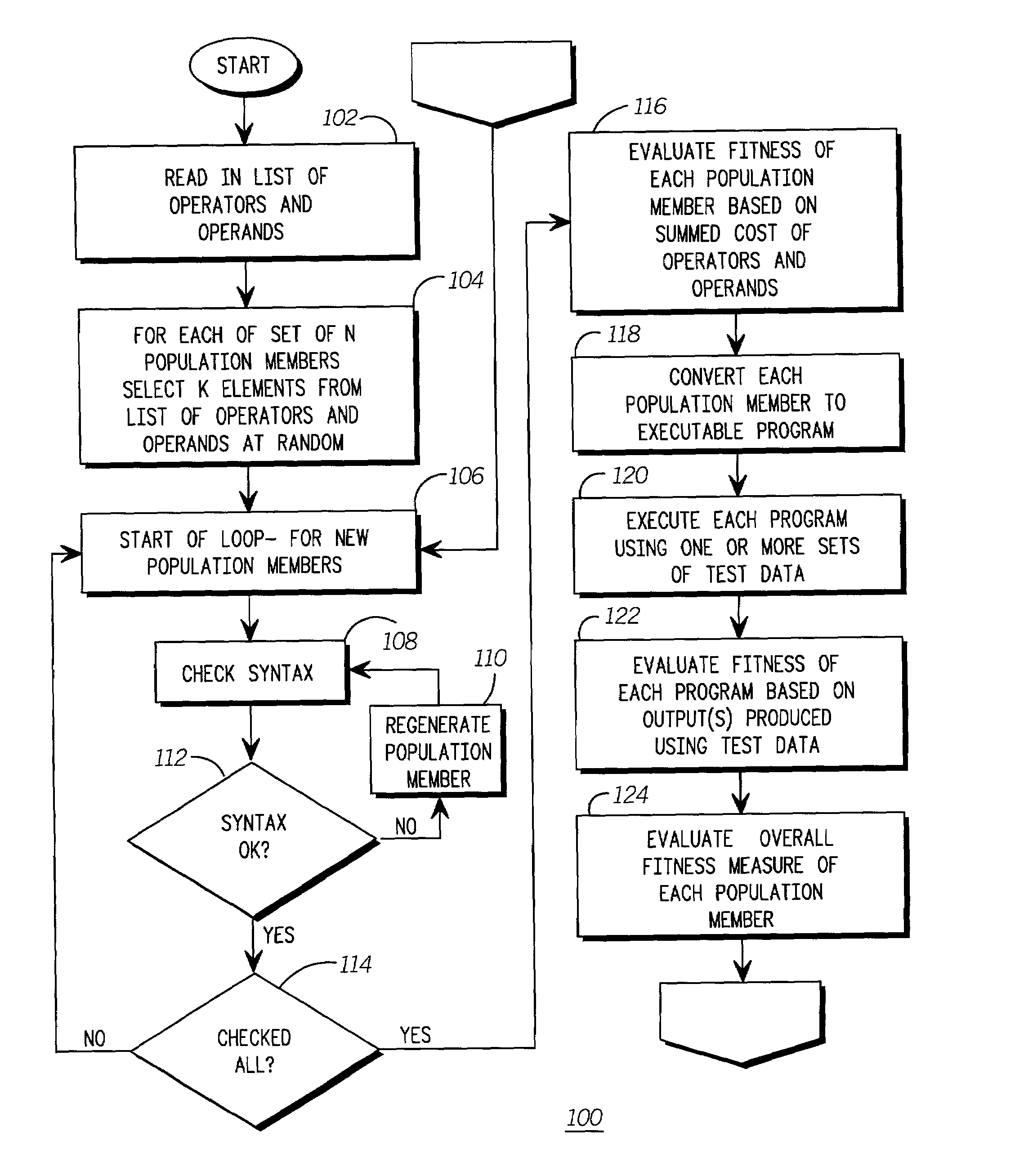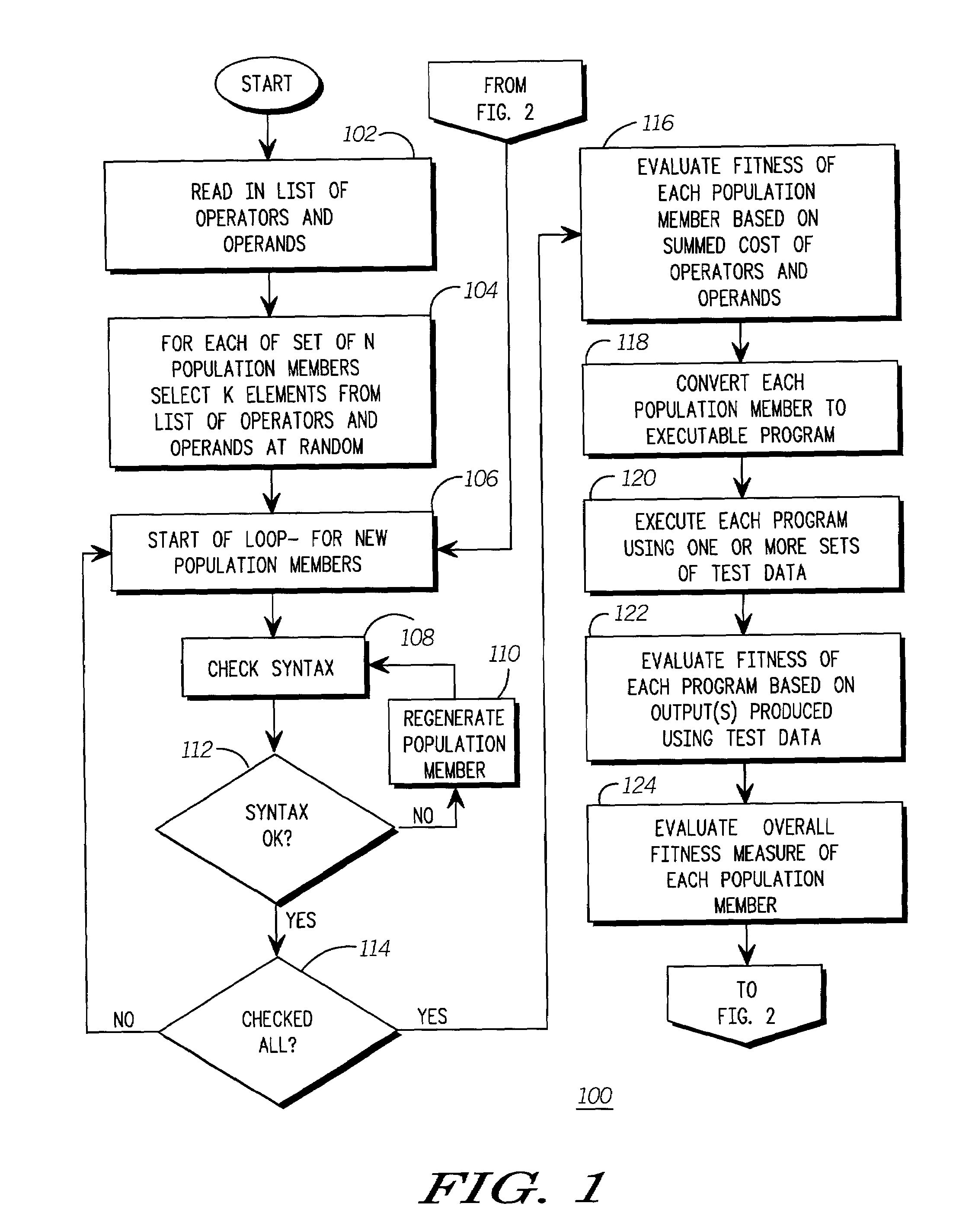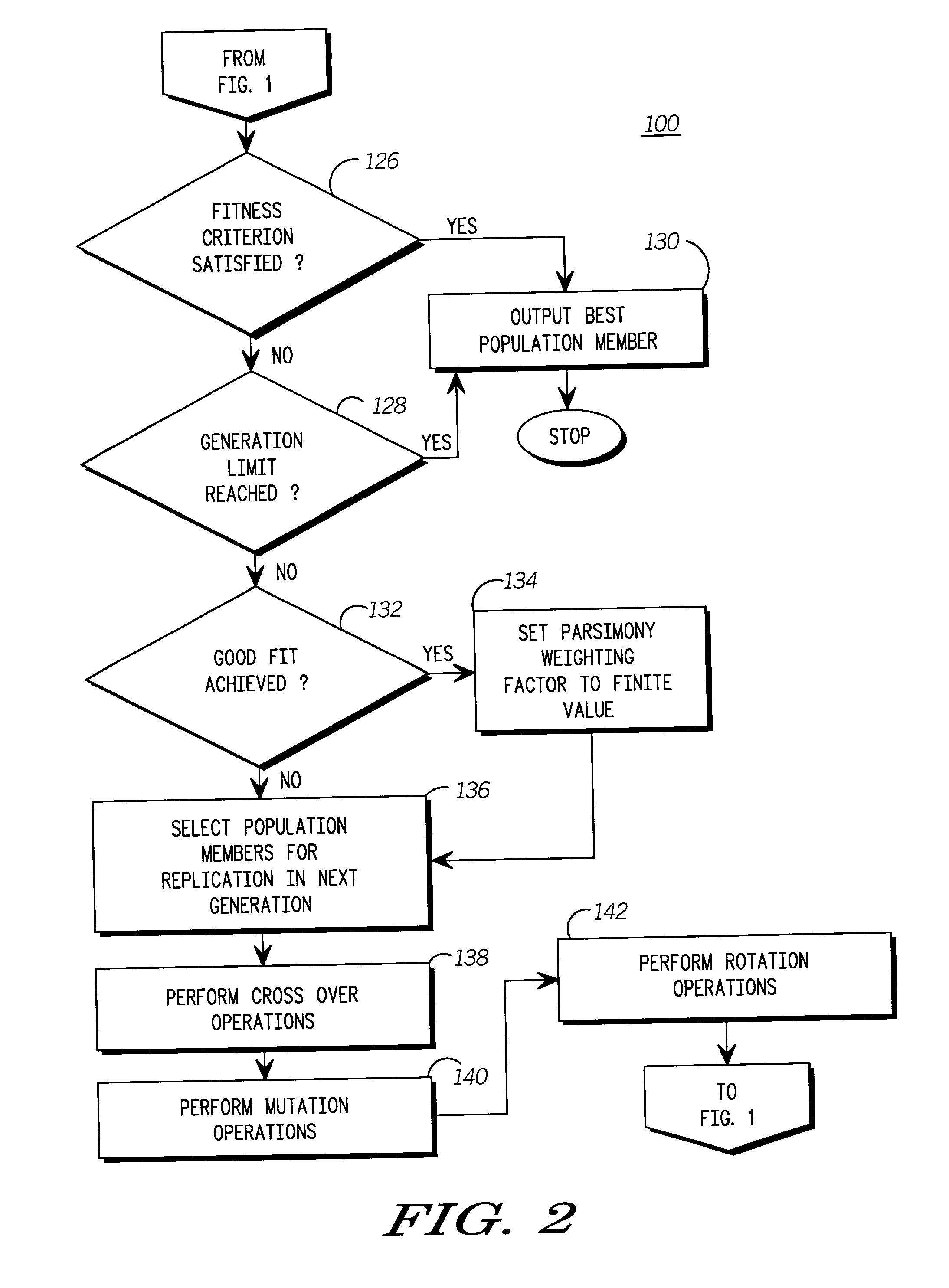Gene expression programming algorithm
a programming algorithm and gene technology, applied in the field of gene expression programming algorithms, can solve the problems of bloated expressions, over-fitting bloated expressions, and large mathematical expressions in the population,
- Summary
- Abstract
- Description
- Claims
- Application Information
AI Technical Summary
Problems solved by technology
Method used
Image
Examples
Embodiment Construction
[0022]FIG. 1 is a first part of a flow diagram of an algorithm 100 for evolving a population of representations of mathematical expressions according to the preferred embodiment of the invention, and FIG. 2 is a second part of the flow diagram begun in FIG. 1. The algorithm 100 shown in FIGS. 1, 2 is a Gene expression programming (GEP) type genetic algorithm (GA). The genetic algorithm 100 is used to determine a mathematical expression that fits data well. The data may comprise one or more sets of associated independent and dependent variable values. There may be one or many independent variables depending on the nature of the mathematical expression being sought.
[0023]Referring to FIG. 1, in step 102 a list of operators and operands to be used is read in. The list may be stored in a configuration file. It is appropriate for a wide variety of technical fields to include addition, subtraction, multiplication, and division among the operators read in in step 102. In a wide variety of ...
PUM
 Login to View More
Login to View More Abstract
Description
Claims
Application Information
 Login to View More
Login to View More - R&D
- Intellectual Property
- Life Sciences
- Materials
- Tech Scout
- Unparalleled Data Quality
- Higher Quality Content
- 60% Fewer Hallucinations
Browse by: Latest US Patents, China's latest patents, Technical Efficacy Thesaurus, Application Domain, Technology Topic, Popular Technical Reports.
© 2025 PatSnap. All rights reserved.Legal|Privacy policy|Modern Slavery Act Transparency Statement|Sitemap|About US| Contact US: help@patsnap.com



